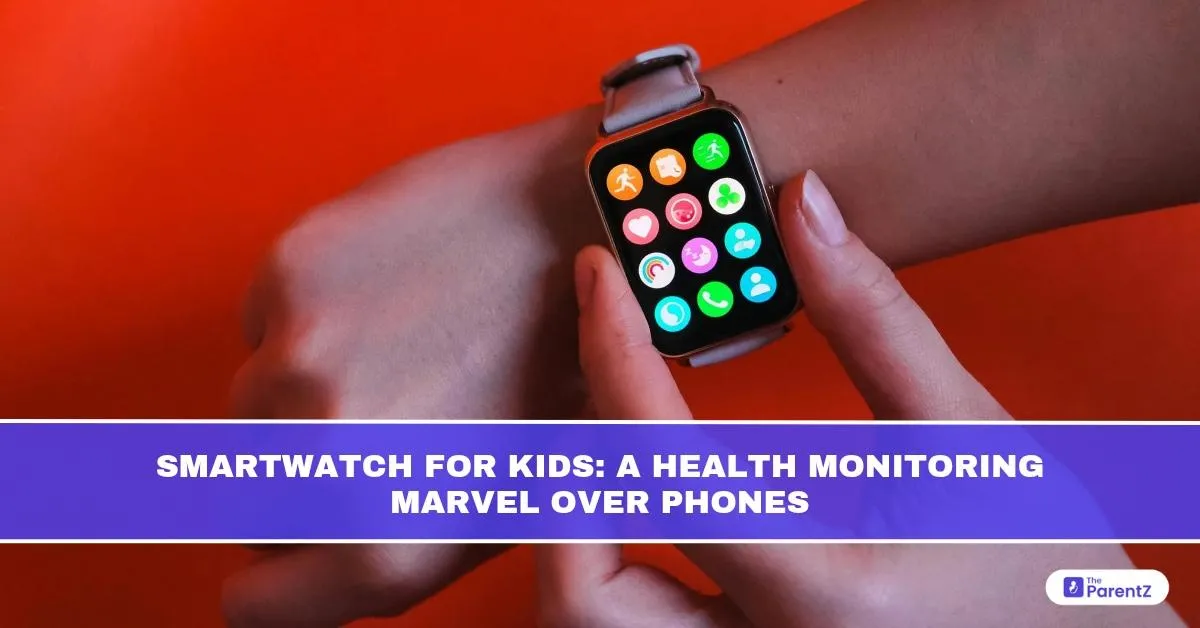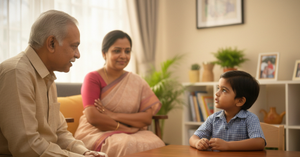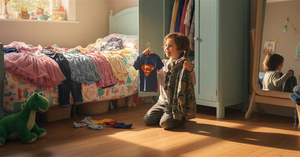You give your child a smartphone for safety. Then come the complaints, long screen time, eye strain, random apps, poor sleep, and soon, arguments. But what if there was a better option? One that lets you stay connected, monitor health, track location and still protect your child’s mind and routine? Enter the smartwatch for kids, a health-monitoring marvel that does more than tell time.
Why Smartwatches for Kids Are Becoming a Parental Favorite
Think of it as a wearable wellness tool with just the right features, minus the problems that phones often bring.
Today’s smartwatches for kids are built to:
- Track basic health signs (like heart rate, steps, sleep)
- Offer GPS safety tracking
- Allow calling and messaging with only selected contacts
- Encourage physical activity
- Avoid internet browsing and social media distractions
They are simple, screen-light, and child-safe.
How They Compare: Smartwatch vs Smartphone for Kids
| Feature | Smartwatch for Kids | Smartphone |
| Screen time | Low (no full apps/games) | High, often uncontrolled |
| Health tracking | Yes (activity, heart rate) | Rare in kids’ phones |
| GPS safety tracking | Yes | Yes, but easier to hide/turn off |
| Parent control | Strong (limited contacts, auto location) | Weak or avoidable by child |
| Risk of addiction | Low | High |
| Sleep disruption | Minimal | Common due to screen use |
Smartwatches provide connection without distraction.
Health Benefits of Smartwatches for Kids
- Physical Activity Reminders: Watches encourage children to stay active—tracking steps, giving movement nudges, and even gamifying simple fitness goals.
- Sleep Monitoring: Good-quality kids’ watches track sleep hours and patterns, helping parents know if the child is getting proper rest.
- Heart Rate and Body Temperature (in some models): Especially useful for early detection of fever or overexertion in hot weather.
- Reduced Screen Exposure: Unlike phones, smartwatches don’t push the child toward constant swiping and dopamine-driven scrolling.
- Safer Communication: Two-way calls and voice notes with only parent-approved contacts reduce the risk of strangers or scam calls.
Why It Works Better for Indian Homes and School Life
Most schools in India ban phones but smartwatches are more discreet and can still help in emergencies. They also:
- Avoid peer pressure around social media apps
- Don’t interfere with studies or tuition routines
- Can be worn during playtime, travel, or outings for real-time tracking
Even grandparents find it easier to call a child via smartwatch than navigating app settings on a phone.
Meet the Future: What a Good Kid’s Smartwatch Should Have
| Must-Have Features | Why It Matters |
| GPS live location | Real-time safety and peace of mind |
| SOS button | Quick alert to parents in danger |
| Call and message with contact list | Keeps child connected safely |
| Activity & sleep tracker | Promotes healthy lifestyle habits |
| Alarm/Reminder setting | Helps with routine and time sense |
| Splash resistance | Durable for everyday play |
Some Indian brands now offer Aadhaar-enabled tracking and SIM support with child-safe data plans.
How It Helps During Illness or Emergencies
Let’s say your child is in school and feels faint or feverish.
With a smartwatch, they can:
- Send a quick voice note or press the SOS
- Share live location if lost or feeling unwell during travel
- Automatically log lower physical activity or higher heart rate letting you notice changes early
This kind of light, continuous monitoring is a real-world parenting aid, not just a digital toy.
3 Facts vs Myths About Kids’ Smartwatches
Myth 1: My child is too young for any device
Fact: A smartwatch is safer than a phone, it connects without overexposing your child to the digital world.
Myth 2: They’re expensive and not worth it
Fact: Basic child-safe models start under ₹2,000–₹3,000 and offer high value with low risk.
Myth 3: My child will misuse it
Fact: Most models come with locked contact lists and no open internet, making misuse unlikely.
FAQs
1. From what age can a child wear a smartwatch?
Most child-specific smartwatches are designed for ages 5 to 12, with adjustable straps and age-friendly interfaces.
2. Will it replace the need for a phone later?
No, but it helps delay unnecessary smartphone exposure until your child is older and more emotionally ready.
3. What if my child removes or loses the watch?
Some models alert you when the watch is taken off or disconnected. Teaching the importance of responsibility with devices is also part of the journey.
Final Thoughts
Your child doesn’t need a screen in their pocket, they need a safety net on their wrist. A smartwatch gives parents peace of mind, encourages healthy habits, and protects children from early digital distractions. It’s not about watching every move, it’s about staying connected in a smart, balanced way. The future of child health isn’t in more screen time, it’s in thoughtful tools that protect while promoting freedom.








Be the first one to comment on this story.